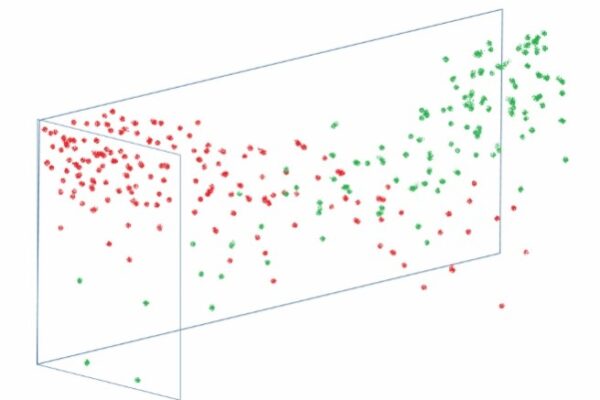Lately I’ve been working out a practical structure1 for a 5-year model of clinical involvement for patients with addiction illness (not less severe presentations).
What I have in mind is quite concrete but would take a lot of words to say. I am often a visual or spatial thinker, and for this topic it’s true once again.
Suffice it to say the image below shows the starting point of formal clinical engagement (which could be an outpatient or residential program) on the far left, and a five-year path moving forward in time. The example shown is one individual person: the red dots are different problem indicators, and the green dots are different wellness indicators.2

Over the five years, as this example shows, the problem indicators are dropping, and the wellness indicators are rising.3
You’ll notice that even at the very start there are wellness indicators present (specific strengths, assets, resiliencies and so forth). And you’ll notice that out at five years there are also some problem indicators that are still present.4
I showed this to a colleague last week and was asked a couple of questions that helped me see some of my assumptions and blind spots.
One question they asked was, “Why do you have that short wall on the left side?”
I liked that question because it rattled me awake.
- My immediate answer was that it shows the time of admission to a formal primary addiction treatment service (like a residential program or an Intensive Outpatient Program).
- But I loved that question because it basically invokes the idea of the “Engagement/Persuasion” and “Stabilization” phases that I did not show5 and that come before the beginning of the “Active Treatment” phase.
The other question they asked was why I had the long wall there – like, “Why do you show any walls at all, instead of showing just the indicators?”
- The bottom line is that the shape of the two walls (without any other sides) is meant to carry the idea of a system that is both structured in some ways and open in other ways. My classic example of this is how no appointments are needed for some quick oil change shops, but for other work an appointment is made.
In the days ahead I’ll be working out and adding pre-planned service intervals, problem and wellness targets, and continuous personal processes.
And I’ll also be adding some clinical, coaching, and peer support methods to help fill out the function of the model – based on both the pre-planned intervals and the individualized presence/absence of the various indicators.
4https://recoveryreview.blog/2021/04/12/recovery-orphans/
5https://recoveryreview.blog/2020/02/01/peer-support-or-harm-reduction-or-recovery-coaching/
